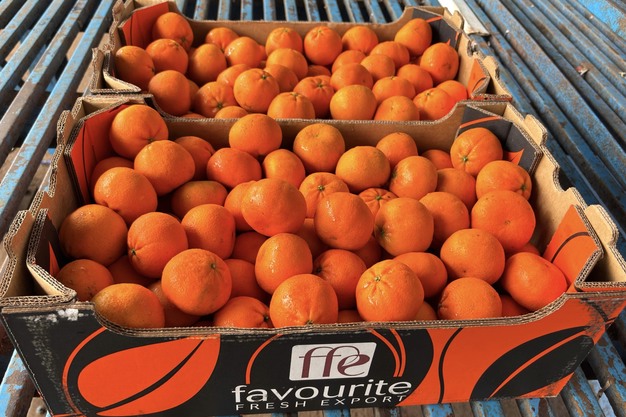India’s market for imported mandarins is experiencing strong growth, driven by increased supplies from South Africa, followed by Australia, says Devanshu Kalra, owner of fresh produce importer Radha Krishan Fruit Company. He explains, “The availability of South African mandarins has nearly doubled compared to last year. Weekly arrivals have been strong and consistent since the season began, marking a significant change from prior years when volumes were limited.”
Kalra highlights that this surge in supply has caused some downward pressure on prices, but the Indian market has shown resilience. “The increased volume has led to a selling price drop of about USD 3.4 per carton or roughly by 16-20% compared to last season. However, demand has been strong enough to absorb most of the extra fruit, indicative of India’s appetite for higher mandarin volumes.”
 © Radha Krishnan Fruit Company
© Radha Krishnan Fruit Company
According to Kalra, “South Africa’s Nadorcott remains a favorite among Indian consumers due to its excellent eating quality. This year has seen notable improvements in this variety with mandarins arriving with excellent color, balanced sweetness, and attractive packaging.”
Regarding supply dynamics, South African mandarin exports were more evenly allocated this season, Kalra shares. “In the past, Western markets were given priority, making sourcing challenging and resulting in smaller volumes for India. This year, South African exporters showed more interest in India and the UAE while Indian importers ensured smooth deliveries by securing allocations early, coordinating closely with shipping partners, and focusing on compliance and documentation to avoid clearance delays.”
 © Radha Krishnan Fruit Company
© Radha Krishnan Fruit Company
Meanwhile, Australia’s role in India’s mandarin imports is steadily strengthening. Kalra notes, “The Murcott variety is well-accepted by Indian consumers and contributes significantly to Australia’s market share. Australian mandarins also benefit from preferential tariff advantages under the India-Australia Economic Cooperation and Trade Agreement ECTA, which reduced the usual import duty on citrus from 33 to 16.5 percent for Australia. This tariff cut narrowed the price gap between South African and Australian mandarins from about USD 4 to USD 1 to 1.5 per carton, making landing costs for Australian fruit far more competitive.”
Kalra attributes the popularity of mandarins, extending beyond India’s metropolitan areas to tier 2 and tier 3 cities, to enhanced distribution networks, modern retail formats, and the growth of e-commerce platforms. He concludes, “Mandarins’ convenience as a ready-to-eat snack is drawing more consumer attention every season. We are optimistic that by introducing new varieties such as South Africa’s Royal Honey Murcott and Tango, we can strengthen the existing mandarin basket and further boost their availability in the Indian market.”
For more information:
Devanshu Kalra
Radha Krishan Fruit Company
Email: [email protected]
www.rkfc.in
Source: The Plantations International Agroforestry Group of Companies
